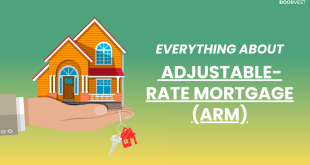Overview of Conventional Mortgages
1 Definition of Conventional Mortgages
Conventional mortgages are home loans not insured by the federal government. They are available through private lenders such as banks, credit unions, and mortgage companies. These loans conform to the guidelines set by Fannie Mae and Freddie Mac, although there are also non-conforming conventional loans that do not meet these criteria.
2 Types of Conventional Mortgages
Conventional mortgages can be broadly categorized into two types: conforming and non-conforming loans. Conforming loans meet the standards set by Fannie Mae and Freddie Mac, including loan limits. Non-conforming loans, such as jumbo loans, exceed these limits and have different qualification criteria.
2. Benefits of Conventional Mortgages
1 Lower Overall Costs
Conventional mortgages often have lower overall costs compared to government-backed loans because they typically have lower fees and do not require mortgage insurance premiums if the down payment is 20% or more.
2 Flexible Loan Terms
Borrowers can choose from a variety of loan terms, ranging from 10 to 30 years, allowing for more flexible repayment options. This flexibility can help borrowers find a mortgage that best fits their financial situation.
3 No Upfront Mortgage Insurance Premium
Unlike FHA loans, conventional mortgages do not require an upfront mortgage insurance premium. This can save borrowers a significant amount of money at the time of purchase.
4 Potential for Lower Interest Rates
Borrowers with excellent credit scores and substantial down payments can often secure lower interest rates on conventional mortgages compared to other loan types. This can result in significant savings over the life of the loan.

3. Eligibility Criteria for Conventional Mortgages
Credit Score Requirements
To qualify for a conventional mortgage, borrowers typically need a minimum credit score of 620. However, higher scores can lead to better loan terms, including lower interest rates.
Income Requirements
Lenders require proof of stable and sufficient income to ensure borrowers can afford their mortgage payments. This often includes reviewing pay stubs, tax returns, and employment history.
Debt-to-Income Ratio
A favorable debt-to-income (DTI) ratio is crucial for conventional mortgage approval. Generally, lenders prefer a DTI ratio of 43% or lower, although some may allow up to 50% with compensating factors.
Down Payment Requirements
Conventional loans usually require a down payment of at least 3% to 5% for primary residences. However, a down payment of 20% or more can eliminate the need for private mortgage insurance (PMI).
4. Applying for a Conventional Mortgage
Pre-Approval Process
Getting pre-approved involves a lender evaluating your financial situation and creditworthiness to determine how much you can borrow. This step can give you a clear understanding of your budget and strengthen your position when making offers.
Required Documentation
The documentation required for a conventional mortgage includes proof of income, employment history, credit report, tax returns, and bank statements. Having these documents ready can streamline the application process.
Choosing a Lender
Selecting the right lender is crucial. Compare rates, fees, and customer reviews to find a lender that offers the best terms and service for your needs.
Loan Application Process
The loan application process involves submitting your documentation, undergoing a property appraisal, and awaiting approval. The timeline can vary, but it typically takes 30 to 45 days from application to closing.
5. Types of Conventional Mortgages
Fixed-Rate Mortgages
Fixed-rate mortgages have an interest rate that remains constant throughout the loan term, providing predictable monthly payments. Common terms are 15, 20, and 30 years.
Adjustable-Rate Mortgages (ARMs)
ARMs have interest rates that adjust periodically based on market conditions. They usually start with a lower rate than fixed-rate loans, which can increase over time. Typical adjustment periods are annually or every few years.
Jumbo Loans
Jumbo loans are non-conforming mortgages that exceed the loan limits set by Fannie Mae and Freddie Mac. They are used for purchasing higher-priced homes and have stricter credit requirements.
Conforming vs. Non-Conforming Loans
Conforming loans meet the guidelines of Fannie Mae and Freddie Mac, including loan limits. Non-conforming loans, like jumbo loans, do not meet these guidelines and can have different qualification criteria.
6. Understanding Private Mortgage Insurance (PMI)
1 What is PMI?
PMI is a type of insurance required for conventional loans with down payments less than 20%. It protects the lender in case the borrower defaults on the loan.
2 When is PMI Required?
PMI is required when the down payment is less than 20% of the home’s purchase price. It is typically included in the monthly mortgage payment.
3 How to Avoid PMI
To avoid PMI, you can make a down payment of 20% or more, use a piggyback loan, or opt for lender-paid mortgage insurance, which may result in a higher interest rate.
4 How to Remove PMI
PMI can be removed once the loan-to-value ratio (LTV) reaches 80%. Borrowers can request cancellation in writing once they have paid down enough of the loan principal.
7. Conventional Loan Limits
1 Determining Loan Limits
Conventional loan limits are set annually by the Federal Housing Finance Agency (FHFA) based on changes in average U.S. home prices. For 2024, the baseline conforming loan limit is $726,200, but it can be higher in high-cost areas.
2 Impact of Loan Limits on Borrowers
Loan limits affect the maximum amount you can borrow without needing a jumbo loan. Understanding these limits helps you plan your home purchase within the allowable range.
8. Comparing Conventional Mortgages to Government-Backed Loans
1 Conventional vs. FHA Loans
Conventional loans typically require higher credit scores but have lower overall costs and more flexible property requirements compared to FHA loans.
2 Conventional vs. VA Loans
VA loans, available to veterans, often have more favorable terms, including no down payment and no PMI, but conventional loans are accessible to a broader audience.
3 Conventional vs. USDA Loans
USDA loans offer 100% financing for eligible rural properties, but they come with geographical restrictions and income limits. Conventional loans do not have these restrictions.
9. Common Myths about Conventional Mortgages
1 Conventional Loans Require Perfect Credit
While higher credit scores can secure better terms, many lenders offer conventional loans to borrowers with credit scores as low as 620.
2 You Need a 20% Down Payment
While a 20% down payment can eliminate PMI, conventional loans are available with as little as 3% to 5% down.
3 Conventional Loans Have Higher Interest Rates
Conventional loans can offer competitive interest rates, especially for borrowers with strong credit profiles.

10. FAQs about Conventional Mortgages
1 What is the minimum credit score for a conventional mortgage?
The minimum credit score for a conventional mortgage is typically 620, but higher scores can lead to better rates and terms.
2 Can you refinance a conventional mortgage?
Yes, conventional mortgages can be refinanced to take advantage of lower interest rates, change loan terms, or cash out home equity.
3 How long does it take to get approved for a conventional mortgage?
The approval process generally takes 30 to 45 days, depending on the lender and complexity of the borrower’s financial situation.
4 What are the closing costs for a conventional mortgage?
Closing costs typically range from 2% to 5% of the loan amount and can include fees for appraisal, underwriting, and other services.
Conclusion
Conventional mortgages offer flexibility and potential cost savings, making them a popular choice for many homebuyers. Understanding the eligibility criteria, benefits, and types of conventional loans can help you make an informed decision.


